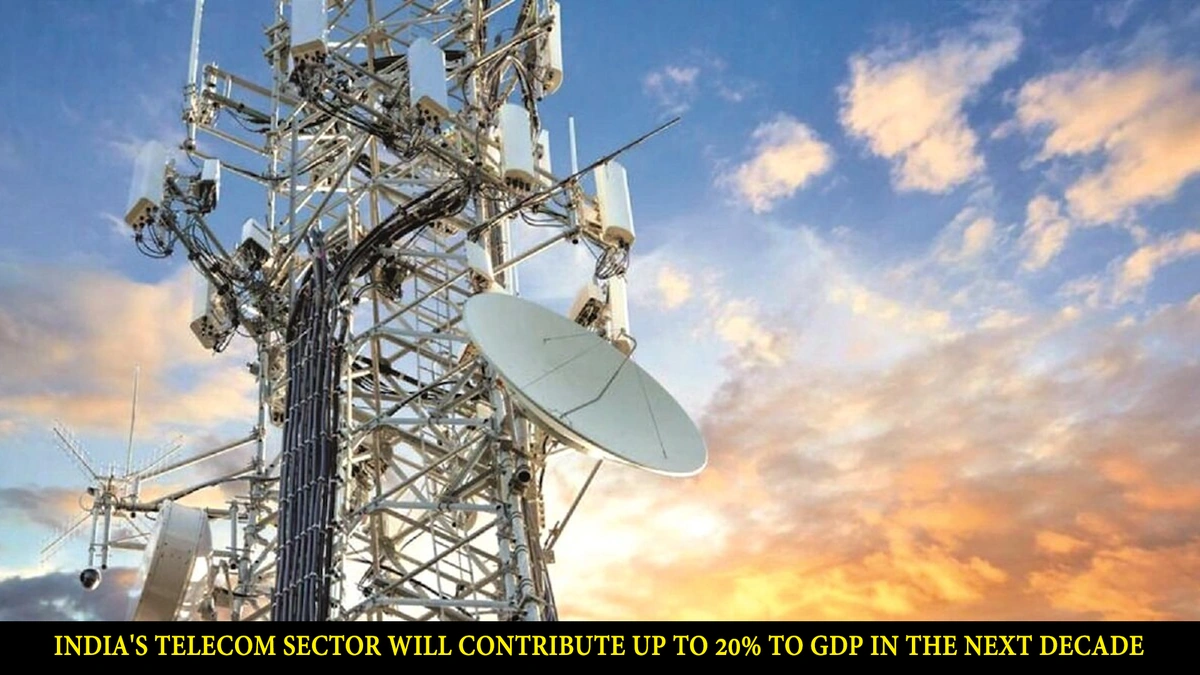Indian Telecom Sector Projected to Boost GDP to 20% in the Coming Decade
Okay, let’s talk telecom. Not the boring kind with hold music and dropped calls, but the kind that’s supposedly going to inject some serious rocket fuel into India’s GDP. We’re talking a potential leap to 20% in the coming decade. Sounds impressive, right? But here’s the thing: what does that really mean for you and me? And more importantly, why should we even care?
This isn’t just about numbers; it’s about understanding the seismic shifts happening beneath the surface of our digital lives. Let’s dive deep and unpack this projection.
The “Why” Behind the Boom | More Than Just Calls

The obvious answer is increased mobile subscriptions and data usage. But that’s scratching the surface. The real magic lies in the cascading effects. Think about it: a thriving telecom sector fuels innovation in other areas. E-commerce explodes, startups flourish, and even traditional industries get a digital makeover. The digital transformation becomes more than a buzzword; it becomes reality.
And what fascinates me is how India leapfrogged older technologies. We went straight to mobile, skipping the landline era for many. This gave us a unique advantage, allowing us to build a robust digital infrastructure from the ground up. The projected GDP boost is a testament to that forward-thinking approach.
5G | The Unsung Hero (and Potential Game-Changer)
Let’s be honest, 5G rollout has been a bit… bumpy. But its potential impact on India’s telecom sector and, consequently, the nation’s economic growth is undeniable. We are talking about speeds that make streaming a breeze, but also the backbone for smart cities, IoT (Internet of Things) devices, and even advancements in healthcare and agriculture.
The deployment of 5G networks requires significant investment in infrastructure, including cell towers, fiber optic cables, and network equipment. The government’s initiatives to streamline regulations, reduce spectrum costs, and promote infrastructure sharing can further accelerate the rollout of 5G and its associated benefits.
Consider the impact on rural areas. 5G could bridge the digital divide, bringing education, healthcare, and economic opportunities to underserved communities. That’s not just a statistic; it’s a life-changing prospect.
The Ripple Effect | Beyond the Balance Sheet
This projected growth isn’t just about telecom companies raking in profits. The real story is the ripple effect across the entire economy. Increased connectivity empowers small businesses, fosters entrepreneurship, and creates new job opportunities. Think about the local Kirana store owner who can now accept digital payments or the farmer who can access real-time market information through a mobile app. The digital economy is a powerful force multiplier.
Telecom infrastructure development is also a key factor. As networks expand and upgrade, construction, engineering, and manufacturing sectors receive a boost. It’s a virtuous cycle of growth and innovation. India’s digital push is driving demand for skilled professionals in areas such as network engineering, software development, cybersecurity, and data analytics. The telecom sector’s growth can lead to job creation and opportunities for upskilling and reskilling the workforce.
Challenges and Caveats | Not All Sunshine and Rainbows
Let’s not get carried away. This rosy projection comes with its fair share of challenges. Regulatory hurdles , infrastructure bottlenecks, and affordability concerns remain significant obstacles. The digital divide is still very real, and ensuring equitable access to technology is crucial. What’s more, data privacy and security are paramount. We need robust regulations and ethical frameworks to protect consumers in this increasingly connected world. The competitive landscape of India’s telecom sector is characterized by intense rivalry among a few major players. The entry of new players or disruptive technologies can further intensify competition and impact market dynamics.
According to the Telecom Regulatory Authority of India (TRAI) TRAI Website , ensuring affordable access to telecom services for all segments of the population remains a key policy objective. The government’s efforts to promote competition, reduce costs, and increase affordability can contribute to bridging the digital divide.
Looking Ahead | The Next Decade and Beyond
The future of India’s telecom sector is undeniably bright. But realizing this potential requires a collaborative effort from government, industry, and citizens. We need smart policies, strategic investments, and a relentless focus on innovation. More importantly, we need to ensure that technology empowers everyone, not just a privileged few.
This isn’t just about hitting a 20% GDP target; it’s about building a more inclusive, prosperous, and digitally empowered India. A growing telecom sector not only benefits businesses and consumers but also contributes to overall economic growth and development.
FAQ
What exactly does “boosting GDP” mean in simple terms?
It means the telecom sector will contribute more money to India’s overall economy, measured as Gross Domestic Product (GDP). More activity in telecom = more economic growth.
How does 5G actually impact the average person?
Faster internet speeds, more reliable connections, and new applications like smart homes, connected cars, and better healthcare services.
What are the biggest challenges facing the Indian telecom sector right now?
High spectrum costs, infrastructure gaps, and ensuring affordable access for everyone, especially in rural areas.
Will this growth create new job opportunities?
Absolutely! We’re talking network engineers, software developers, cybersecurity experts, and a whole range of tech-related roles.
How can the government help to accelerate this growth?
By streamlining regulations, reducing spectrum costs, promoting infrastructure sharing, and investing in digital literacy programs.
Is data security a concern with increased connectivity?
Yes, absolutely. Robust data privacy laws and ethical frameworks are crucial to protect consumers in this digital age.













